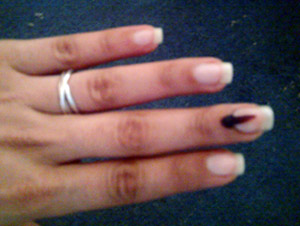The Indian blogosphere and mainstream media is abuzz with debate on why the voter turnout in Mumbai has decreased to 44.21% in spite of voter registration initiatives like Jaago Re and transparency initiatives like Vote Report India.
Most people are trying to explain why Mumbaikars didn't vote.
On a CNBC-TV18 panel discussion, independent candidate Meera Sanyal, Madhav Bhatkuly from Empowered Mumbai, B Venkatesh Kumar from Mumbai University and Vivek Gilani from MumbaiVotes try to explain the low voter turnout in Mumbai.
IANS explains the low Mumbai voter turnout by arguing that most Mumbaikars are only concerned about local issues, which were not really highlighted in the election campaigns. Neha Bagoria on Twitter says that most of the educated young voters in Mumbai are from other states for jobs and can't vote as their names aren't in voting list. Niyukti on Twitter believes that voter apathy to the ‘same old politics’ and heat wave are the two top reasons for lower voter turnout in Mumbai. Bombay Addict says that the apathy of the middle class is the reason for the low voter turnout.
Harshad Oak argues that the low voter turnout numbers may be a reflection of the Election Commission's inefficiency, instead of voter apathy. Neelakantan also points to issues with how voting lists in India are maintained. Amit argues that broken voting machines and missing voter names can't be an excuse for not insisting on voting.
Randheer Singh develops an elaborate conspiracy theory on why the Indian middle class doesn't vote. The Acron at National Interest calls for a more in-dept analysis of the Absent Indian Voter Syndrome.
Mohyna Srinivasan and Vrushali Lad are shocked and saddened that Mumbaikars didn't go out and vote. Kamal Chaturvedi didn't vote himself, but calls Mumbaikars shameless for not voting.
Subin, Dina Mehta, Chhavi Sachdev and Kayezad Adajania share their experience of voting for the first time. It's a sad story of missing voter names, confused poll officials and shoddy poll arrangements. Model-turned-writer Shobha De had an easier time voting. Rajesh Jain explains how he ended up not voting for the first time since 1992, because of his name missing from the voter list. Priya Ramani at LiveMint explains why she didn't vote.
Another set of people believe that the expectation that voter turnout in Mumbai would be high was wrong to begin with.
Columnist Vir Sanghvi is not surprised by the low Mumbai voter turnout and argues that we were deluded in believing that the Mumbai terror attack will lead to higher civic engagement amongst India's urban youth. Ananth Krishnan blames the media for creating a false expectation of higher voter turnout. Kaushal Karkhanis on Twitter says that most outreach effort focused on the classes, not the masses, who form the majority of voters.
Finally, a third set of people are trying to think of ways for encouraging people to vote in the future.
Rediff asks its readers if voting should be made compulsory in India, given the low voter turnout. Mohit Atale believes that the ‘none of the above option’ would have led to a higher voter turnout.
I personally believe that this was an unprecedented election for India in terms of online voter registration, transparency and outreach initiatives.
These initiatives have tapped into the sense of outrage after the Mumbai terrorist attack, channeled it into constructive conversations, and created an online space for civic engagement. It is because of this groundswell that people like writer Shashi Tharoor , danseuse Mallika Sarabhai and ABN AMRO India chief Meera Sanyal stepped up to contest the elections.
Perhaps, these initiatives haven't resulted in a significant increase in voter turnout but they have laid a foundation for engaging India's urban middle-class youngsters into serious civic issues. Talk is cheaper than action, but civic engagement must predate collective action. It's a cycle we have seen in the US. In 2004, online engagement didn't get the nomination for Howard Dean, or the presidency for John Kerry, but it set the foundation of the netroots movement that Barack Obama tapped into in 2008. The 2009 elections in India are similar to the 2004 elections in the US.
Perhaps, in 2014, we will see a charismatic leader emerge on the national scene, who will capture the imagination of India's youth. In these elections, neither Congress nor BJP had a charismatic prime ministerial candidate leading from the front. Also, young people in India are disappointed with the sycophancy in the Congress, wary of the communal extremism in the BJP, and alarmed by the fragmentation in Indian politics as a result of the growing power of the regional parties. Therefore, we have seen discussions on section 49(O) and negative voting ever since the Mumbai attack. Hopefully that will change in 2014.
This post is part of the Global Voices special coverage on the Indian Elections 2009
Cross-posted at Gauravonomics, my blog on social media and social change.








2 comments